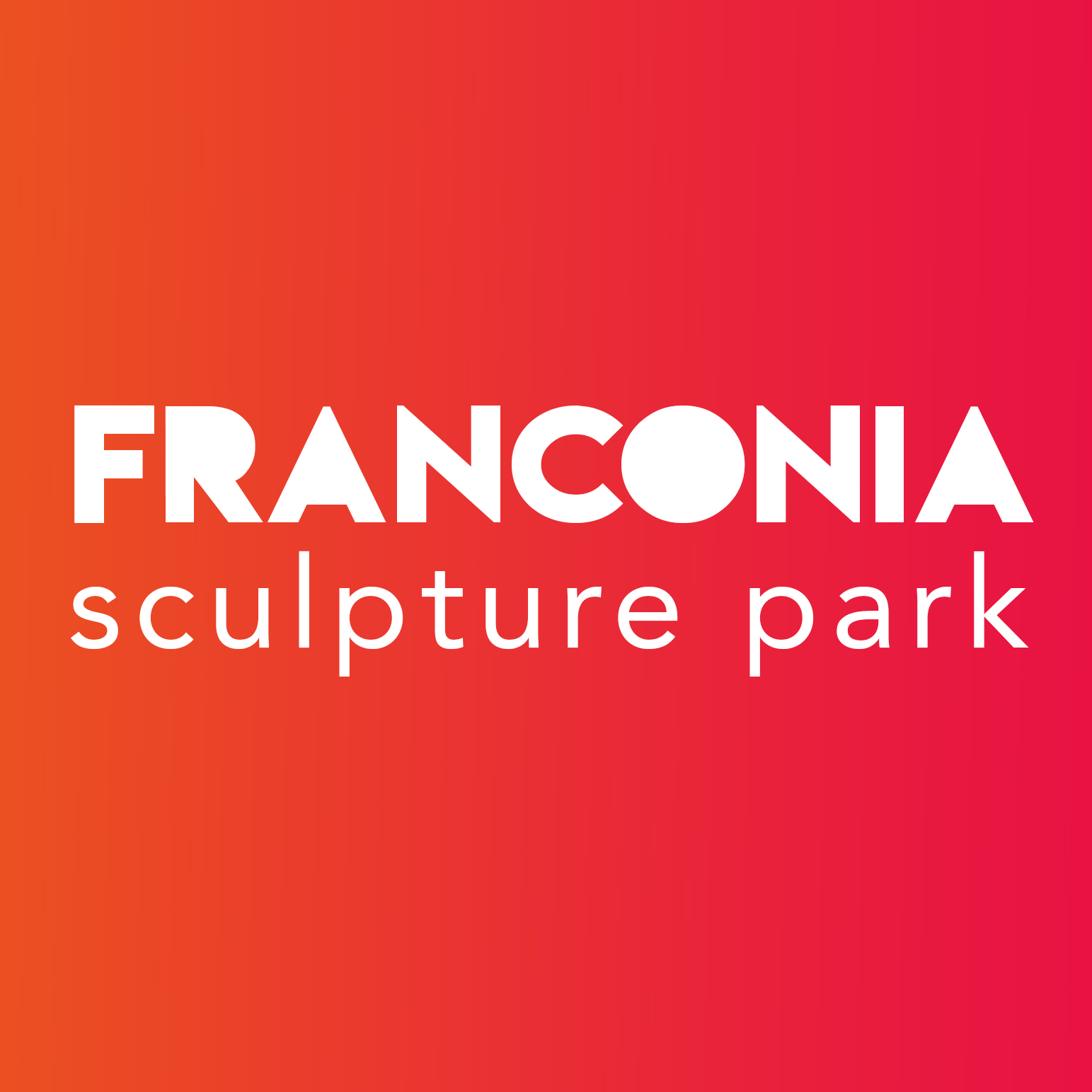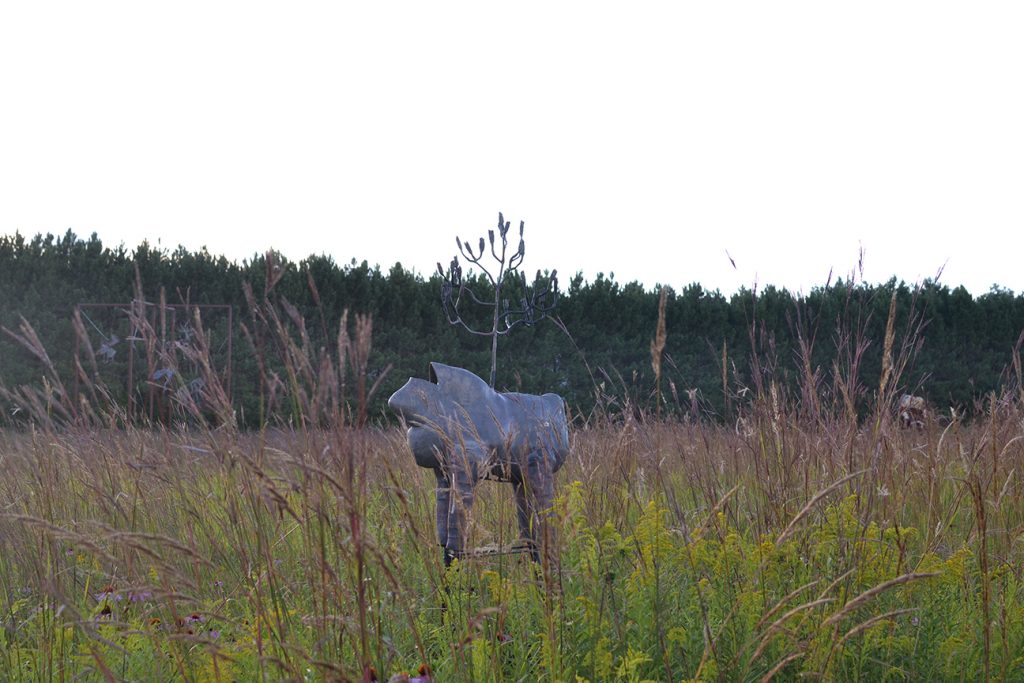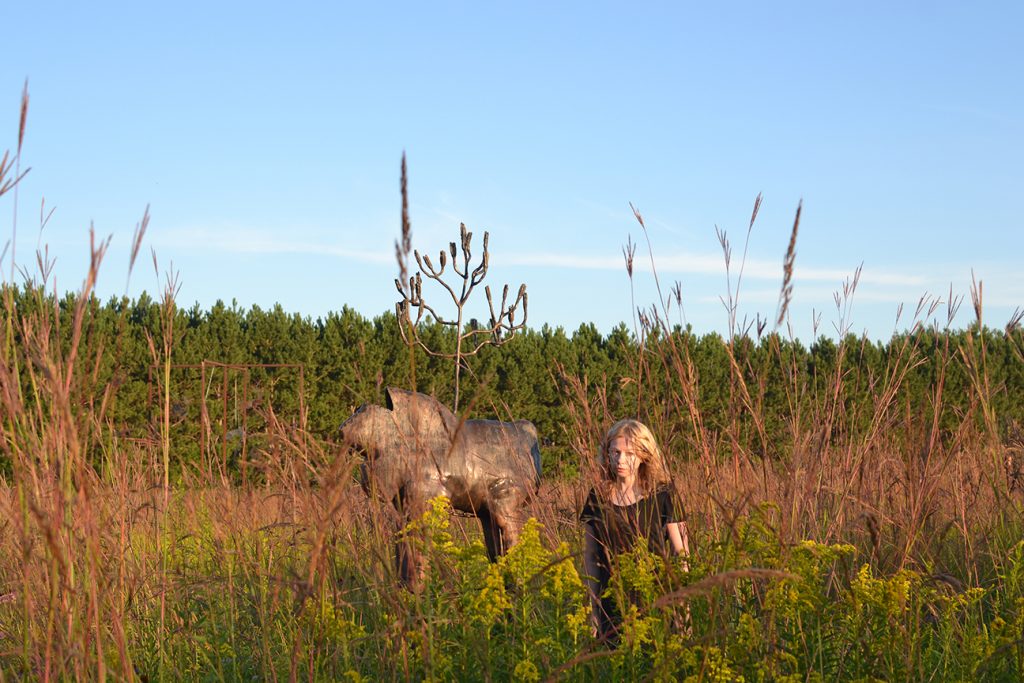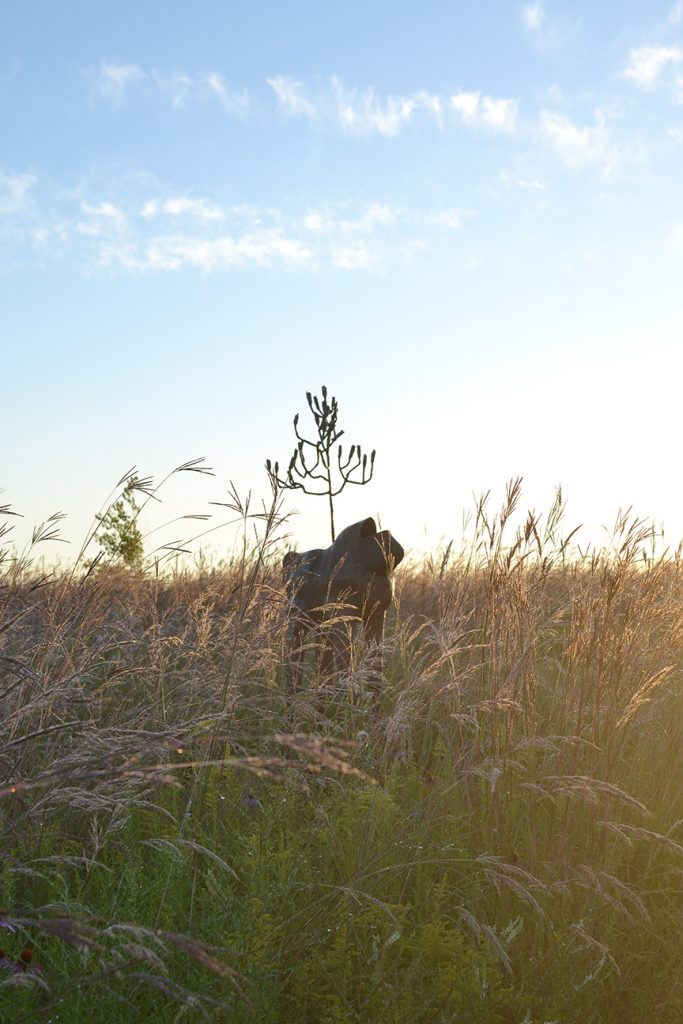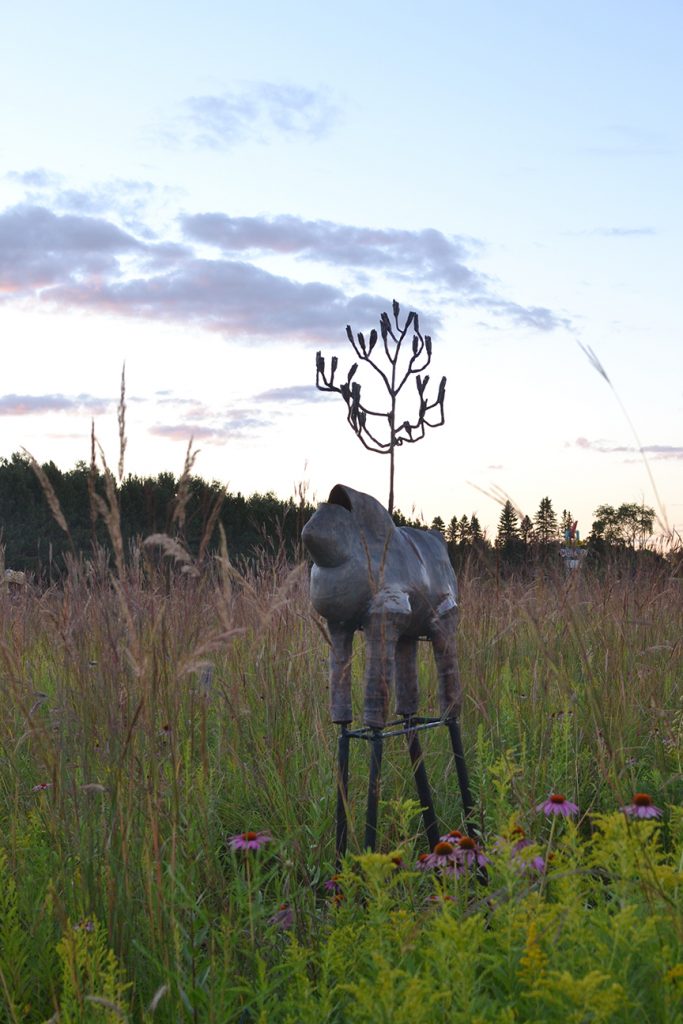Pollinator Rhyton, Agave and Bats
8’5” x 3’ 1” x 1’ 7”
Ceramic stoneware, underglaze and glaze, steel rod and pipe, wood, epoxy putty, insulation foam, PVC pipe, and spray paint
2020
2020 Fellowship Artist
Artist Statement
Pollinator Rhyton, Agave and Bats is a ceramic sculpture based on an ancient animal-shaped offering vessel. This sculpture focuses on the relationship between the agave plant and the work of pollination carried out by migrating bats, on which the agave is dependent. Installed within the prairie grasses and wildflowers of Franconia, the piece is also intended to draw attention to the dependencies between plants and animals found within the ecosystem of the park.
The Pollinator Rhyton focuses on the dependent relationship between the southwestern agave plant (agave americana) and the migrations of the lesser long-nosed bat (Leptonycteris yerbabuenae). These bats move seasonally between Mexico and the United States following the nectar trail of night-blooming cactus and agave plants.
However, both climate change and border wall construction are threatening this phenological event. Climate change is causing flowers to bloom early before the arrival of the bat resulting in pollination connections being lost. I view the terrestrial gesture of the animal rhyton form as symbolic of movement—migration, seasonal change—and the offering vessel form conceptually alluding to the three processes of collection, exchange, and engagement between species. Within this project I am particularly interested in the proliferation of these connections: between places, from the borderland region of the southwest to Minnesota; between plants and animals, the agave and bats; and over time, from ancient ritual vessels to contemporary climate science.
The context of Franconia Sculpture Park also allowed the rhyton offering vessel to highlight the unique ecosystem of wildflowers and prairie grasses supporting local insect pollinators, browsing mammals, and seed dispersing birds.
Rachel Frank
@rachelfrankfrank
Born: Fort Thomas, Kentucky USA, 1980
Resides: Brooklyn, New York, USA
Education
University of Pennsylvania, MFA, 2005
Kansas City Art Institute, BFA, 200
